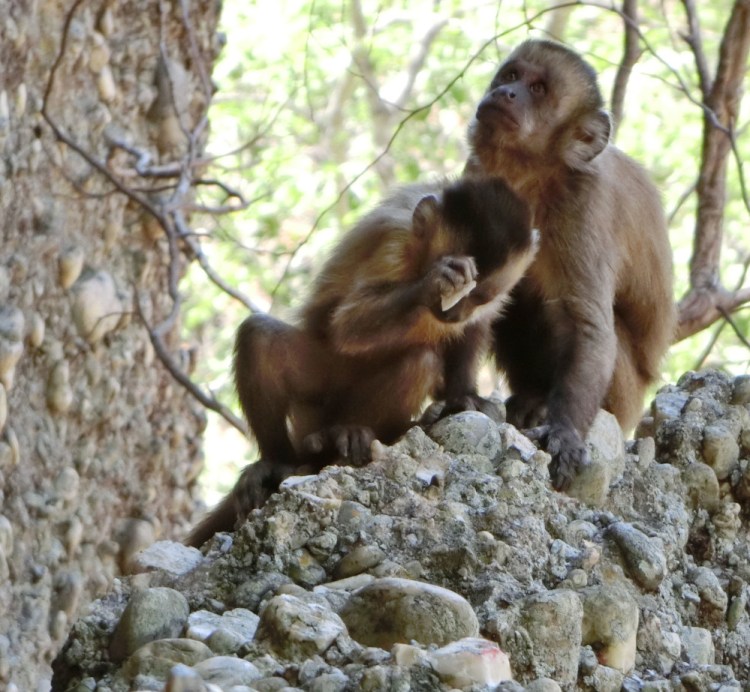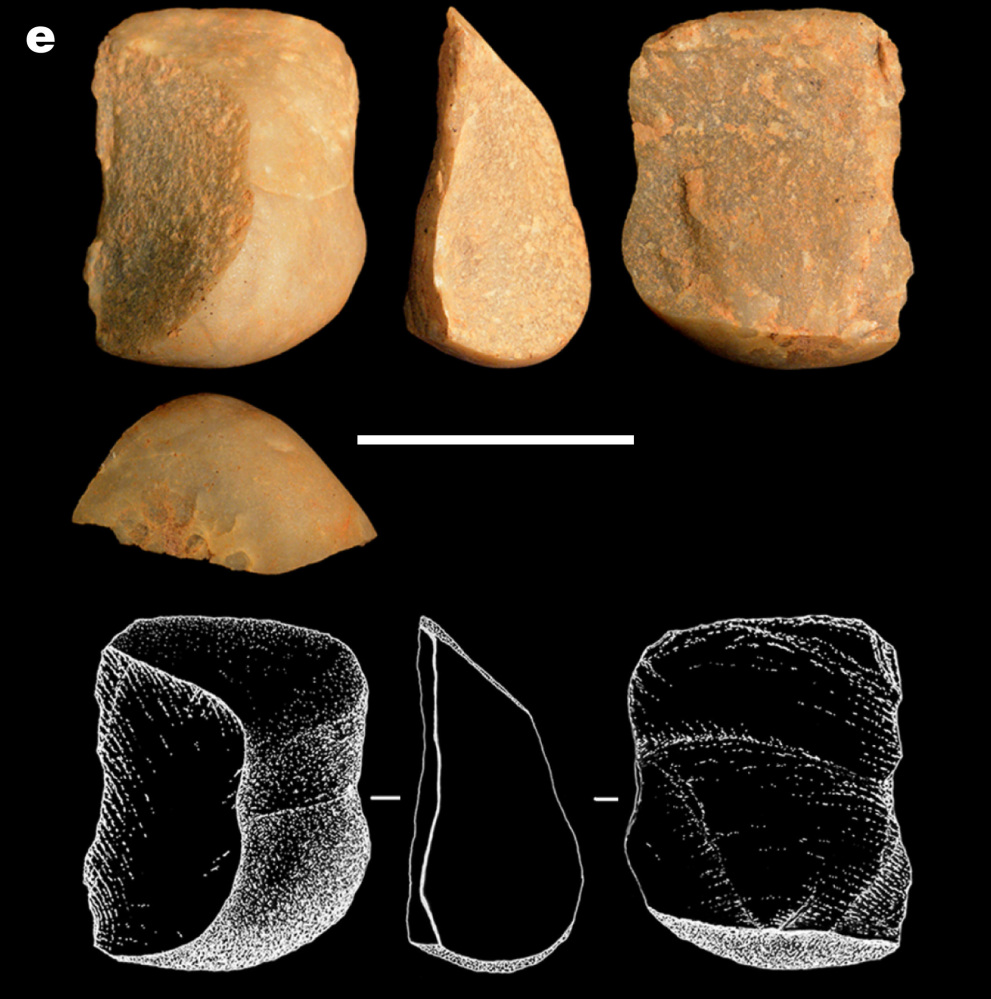Crows do it, chimps do it, even spitting archerfish do it – tool use isn’t even close to being uniquely human. But it turns out that something scientists did think was unique to our kind – the repeated creation of sharp stone flakes that our ancestors used for cutting up meat – may not be all that special. Researchers have found that bearded capuchin monkeys (Sapajus libidinosus) unintentionally create sharp flakes that look just like those found with early hominins.
These Brazilian primates aren’t using the flakes for butchering. In fact, they don’t give a hoot about the potential tools. The flakes, described in a study published Wednesday in Nature, are a natural byproduct of the species’s mysterious stone hammering ritual.
The monkeys go to quartz cliffs and pick up rounded stones with one or both hands, then smash those hammers violently against the cliff face. They chip away at quartz cemented into the cliff, covering themselves in razor-sharp rock dust and licking at the stuff.
When the behavior was first identified in 2007, scientists thought it was some kind of aggressive warning to keep competitors at bay, but now many primatologists believe the dust itself serves some purpose. It could be that minerals inside the stones – or fragments of the lichen that grows on them – serve some kind of medicinal purpose for the monkeys. They could even be swallowing the glasslike dust to cleanse their digestive tract of parasites.
Whatever the intended purpose, one thing is for certain: The monkeys’ brutal pounding turns pieces of their hammer stones into flakes very much like the ones found at early human encampments. And they really, really don’t care.
“The flakes are completely unintentional,” first author Tomos Proffitt of Oxford University told The Washington Post. In fact, the monkeys he and his colleagues observed almost always ignored the flakes that our ancestors found so useful. “They have no use for a sharp cutting edge.”
There’s nothing to suggest that the artifacts previously identified as ancient human tools were actually made by monkeys, Proffitt explained, even though the monkey flakes “very closely mimic” those fragments.
“The complexity that we see with the early hominin material and the range of methods is far more complex than anything we see with the capuchins,” he said. Besides, many of those ancient artifacts were found in association with human fossils, and with signs of human use like scattered bones scarred by butchering. Researchers have also found signs that early humans had the ingenuity to turn stone flakes into new kinds of tools by reshaping them.
“You certainly don’t see the monkeys doing that,” Proffitt said.
Proffitt and his co-authors want to find out just how common these creations are throughout the primate lineage.
While the findings don’t change what we know about human tool use, Proffitt said, they do raise interesting questions about where it might have come from.
“It has long been discussed that a behavior similar to chimp nut-cracking – a percussive food collecting behavior – could have been a precursor to the mechanism humans used to create stone flakes for tools,” he said. “If they noticed that the sharp edges could be useful, flake use could have emerged that way, as a byproduct of something else.”
The capuchin flakes strengthen that hypothesis, and Proffitt hopes that he will be able to trace the behavior back in time. If they can find accidental flakes far enough back in history, they might be able to show that the first butchering tools came from recycled rock junk.
Send questions/comments to the editors.




Success. Please wait for the page to reload. If the page does not reload within 5 seconds, please refresh the page.
Enter your email and password to access comments.
Hi, to comment on stories you must . This profile is in addition to your subscription and website login.
Already have a commenting profile? .
Invalid username/password.
Please check your email to confirm and complete your registration.
Only subscribers are eligible to post comments. Please subscribe or login first for digital access. Here’s why.
Use the form below to reset your password. When you've submitted your account email, we will send an email with a reset code.